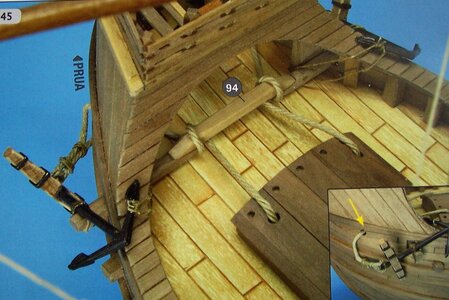Thank you, Heinrich, and a warm welcome to every ship modeler!
The buoy. or anchor buoy, is used to indicate the point where the anchor is located, on the bottom:
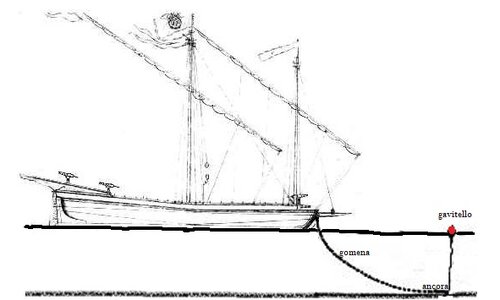
Regarding the buoy, I had seen one with a hook on top, but then I followed these designs:
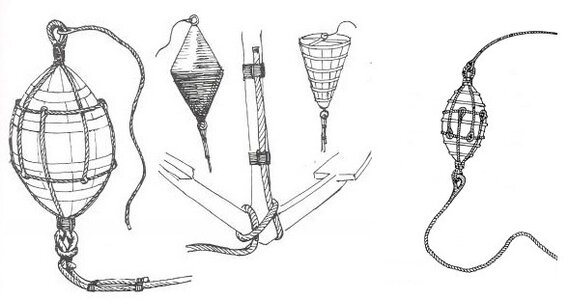
Unfortunately, regarding the historical fidelity of anchor buoys on medieval ships, it is true that there seems to be no figurative documentation, at that time. But it is also true that these elements were probably considered uninteresting by the contemporaries and therefore neglected; moreover, they were also not very visible from the outside,
However, in the volume "Sailing Ship" - by E. K. Chatterton of 1909:
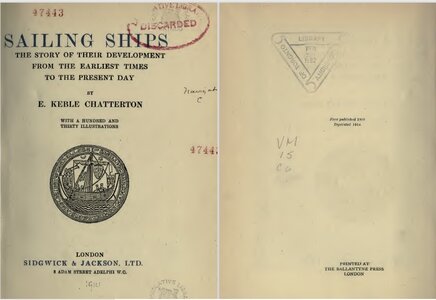
there are very interesting indications. On page 147 is written:
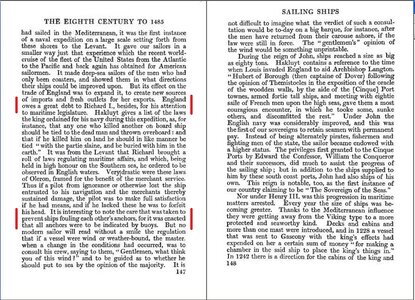
It is therefore stated that at the time of the crusade of Richard I there were already buoys used to signal the corresponding anchors. Moreover, on page 178, the phrase indicated between the red lines suggests the material with which the buoys were built:
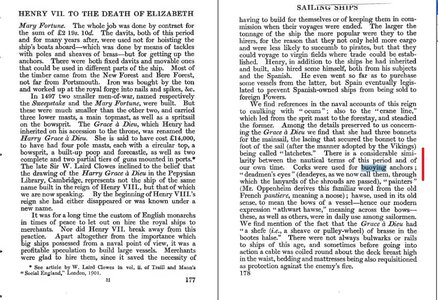
The fact that these details were probably considered of little interest is confirmed by the fact that in the volume "L'architecture Navale" by Dassié in 1677 there is a reference to anchor buoys, called "bouyes" (only one reference in more than three hundred pages, demonstrating the little interest of contemporaries). It is found in the inventory of a first-rate vessel, to which four buoys compete for seven anchors in total (under
 s
s =>
quatre buoyes) :
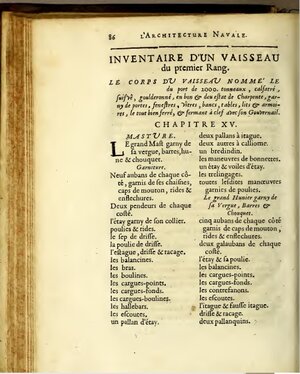
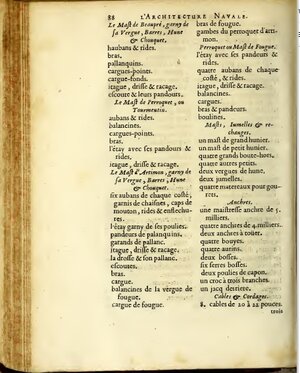
The anchor buoys are not even listed in the internal dictionary in this same volume:
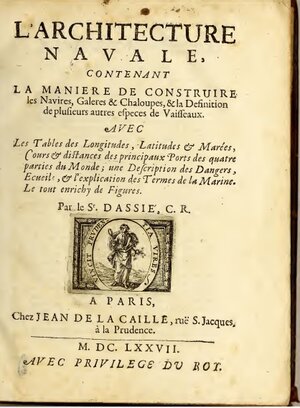
To make the anchor buoys I used the remainder of the 10 mm rod used for the mast. Not having the lathe, I used a method that I saw on an Italian forum: a pencil sharpener to make the two cones and a hacksaw to make the central disk:
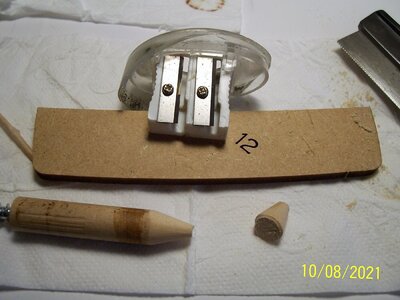
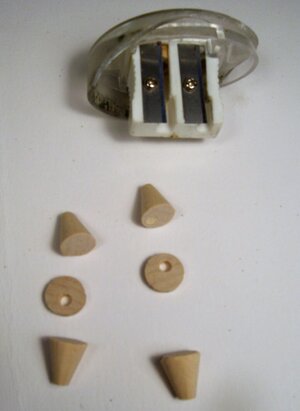
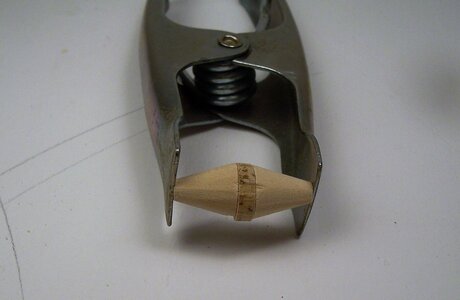
With a blade, we can make vertical and horizontal incisions. Then they need to be drilled at the ends to accommodate the rings:
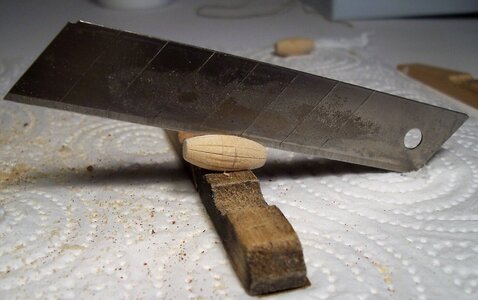
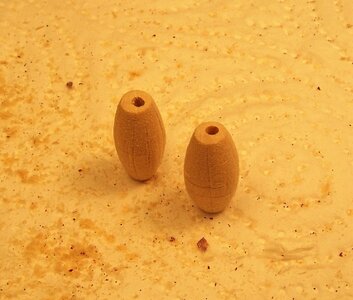
The dimensions seemed excessive and I proceeded to reduce and shape with sandpaper and drill until I got a result that seemed satisfactory:
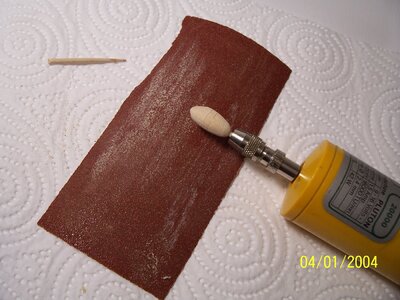
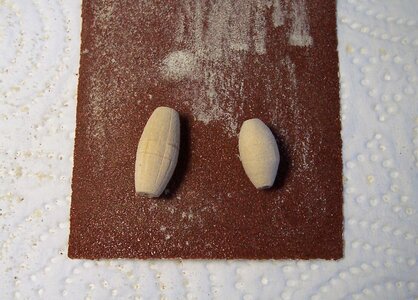
Since it's something that needs to be visible to signal the anchor's position, I thought I'd color it matt red and then build the eyelets.
They can be made of metal (to be blackened) or rope, as is perhaps preferable:
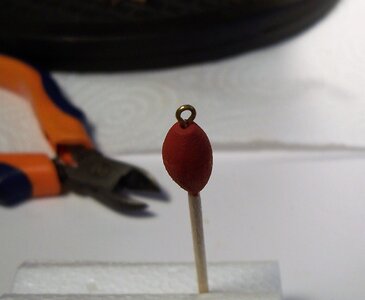
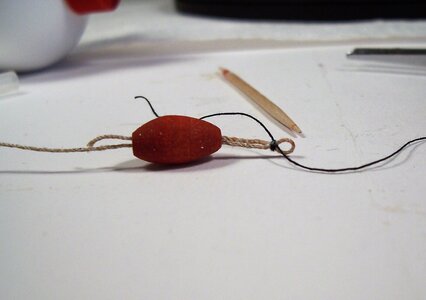
After that, you build around it that envelope of interlaced strings; it's a job that requires a lot of patience:
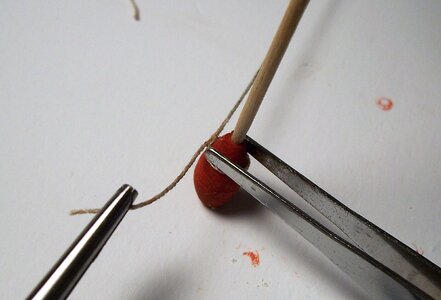
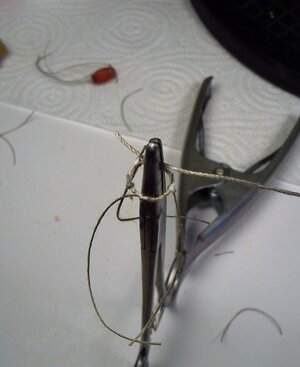
and at the end we get our anchor buoy ready to be tied to the anchor:
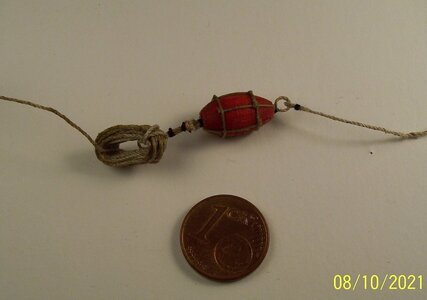
See you next post!
Rodolfo





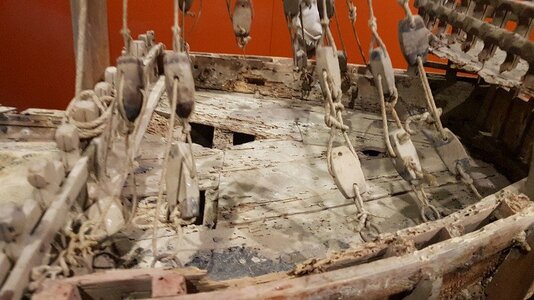

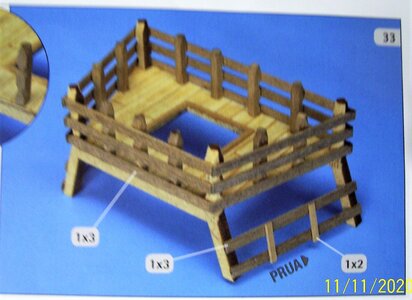
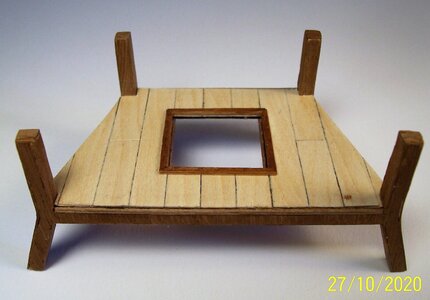
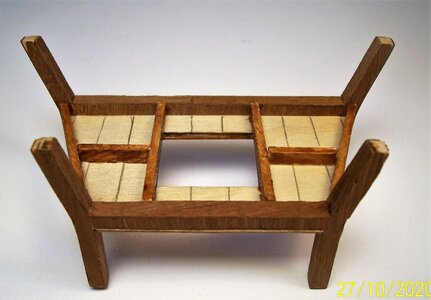
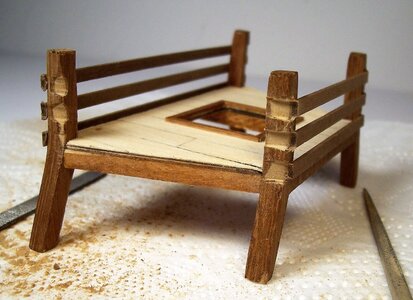
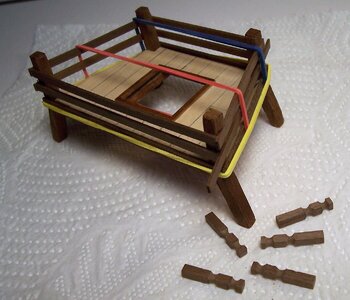
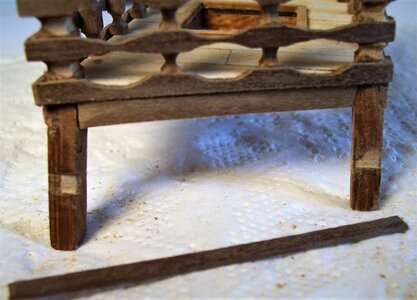
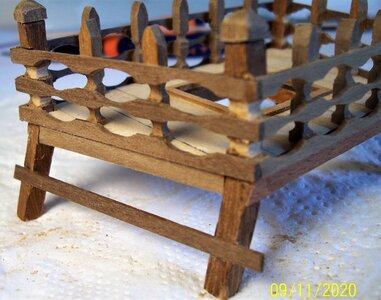
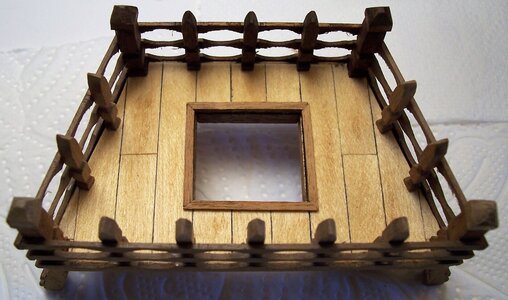
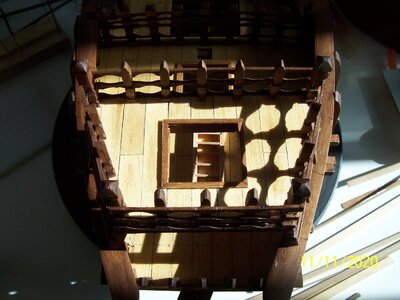
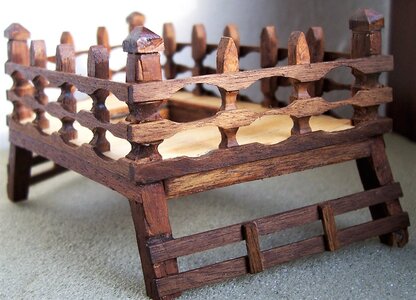
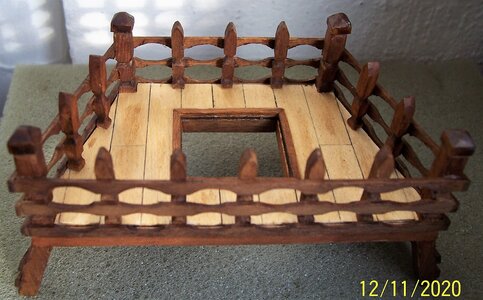
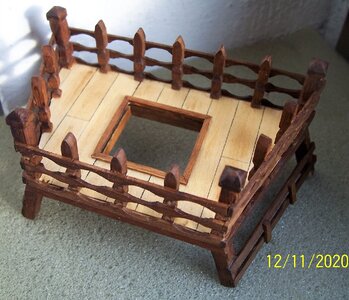


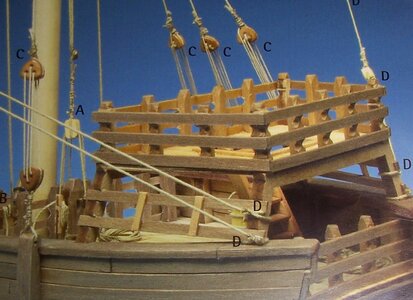
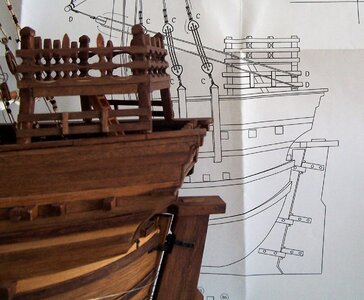


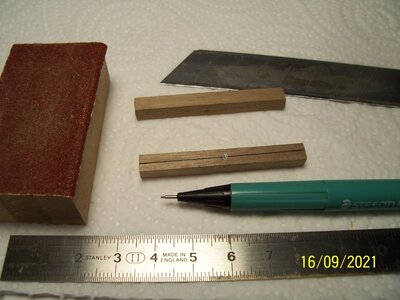
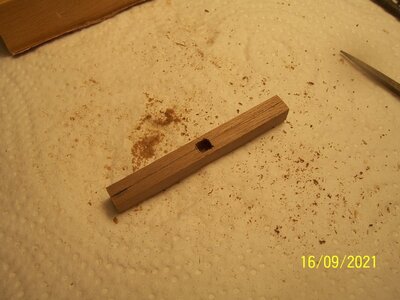
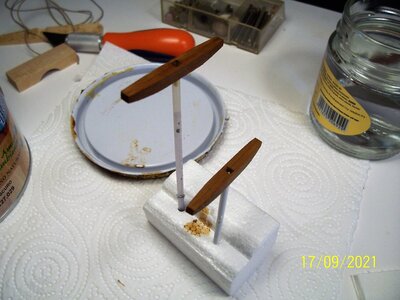
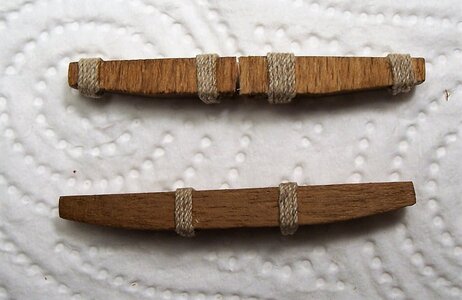
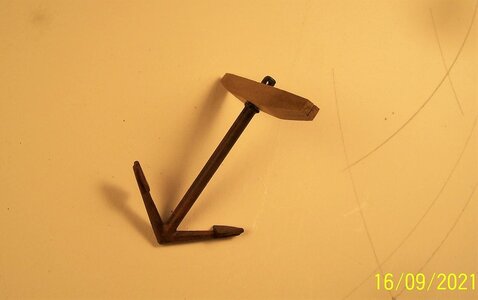
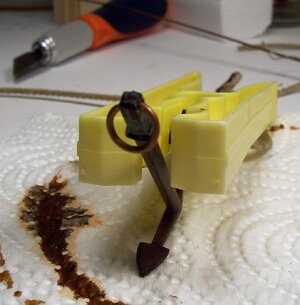
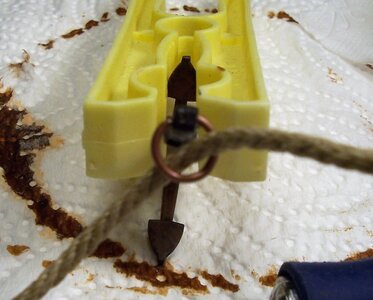
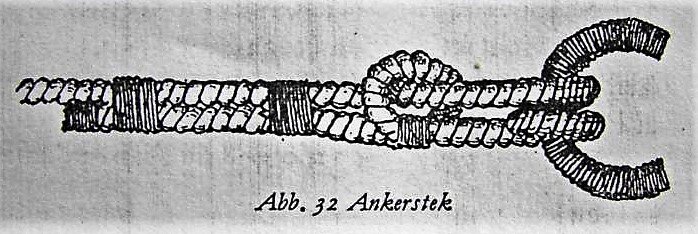
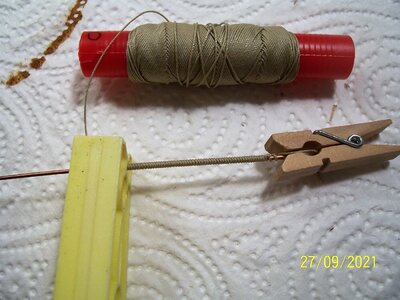
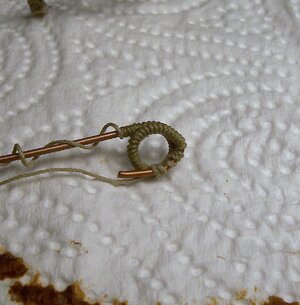
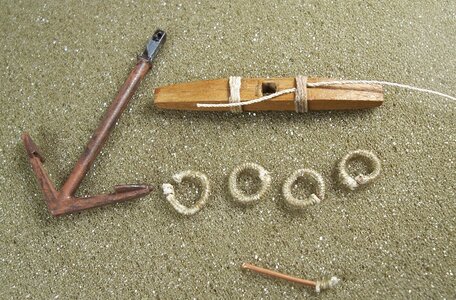
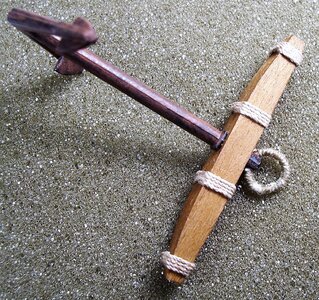
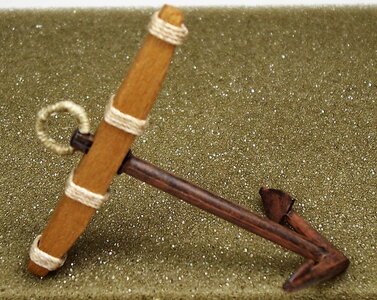

 s => quatre buoyes) :
s => quatre buoyes) :

















